Gang Beasts on Apple Vision Pro
Game design, 3D art, animation, tech art, UI art.
Boneloaf, the company behind the hit indie game Gang Beasts , approached our professional services team at Unity in late 2023 to help create a brand new IP set in the Gang Beasts universe, exclusively for the Apple Vision Pro.
Via the App Store page:
“Meat Co. Test Laboratory is a playful sandbox experiment with inept Factory Workers, excruciating accidents, and stupidly hazardous equipment. Set in the nefarious Meat Company laboratory from Gang Beasts.”
I was heavily involved in this project from start to finish. Initially I was focused on creative concepts, game design documentation, user experience, and art direction. As we approached our launch date, I moved into more of an art support role, providing reference animations, production 3D models (with UV maps and textures), production shaders, and filling in any other gaps as needed to ensure the best possible quality.
One of the big challenges for this project was understanding the features and constraints of brand new hardware that had only been seen by a handful of people outside of Apple at the time. In addition to this, the tools being developed by the Unity engine teams to interface with the Vision Pro were still in an early beta stage.
Once I had gained access to a hardware devkit, and alongside my research in the Apple docs, I created a UML state diagram as a future reference for myself, my team, and our client:
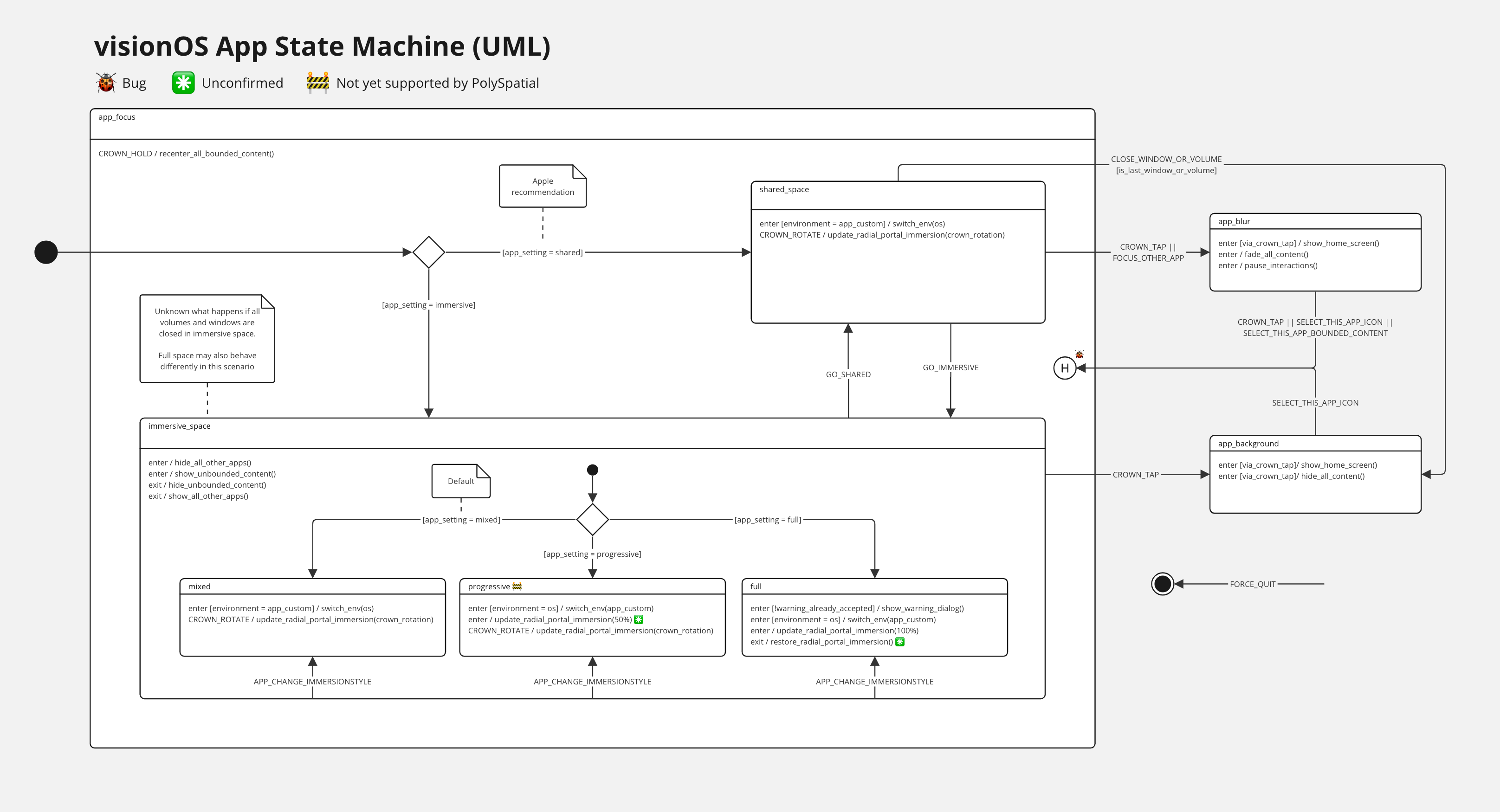
UML diagram describing the various states and state changes for any visionOS application.
Our primary goal for this project was to create a sandbox that utilised the unique value offered by the Apple Vision Pro. Our solution needed to be reminiscent of plastic toy sets that were common in the 80s and 90s. This meant using objects that could actually exist at their depicted scale, and a way to add and remove objects from the play space, like playing with a real toy box.
My initial task was to explore different ideas for how this might be achieved. Using the VR design tool ShapesXR, I storyboarded various rough concepts as a first foray into possible solutions:
Early concept explorations using ShapesXR in VR (Oculus Quest 2).
I believe it's absolutely critical to create concepts in XR for any experience that will be shipped on an XR device. Even when creating such experiences in 3D software on a flat screen, the space cannot be interpreted in the same way, and many design opportunities will be lost.
Our initial feedback favoured the “remote control” concept, so my following work was focused on refining and developing this idea.
Screen recording of an interactive prototype (Figma) detailing an approach using tools on the remote control, with the same interaction model as the toolbar in software like Photoshop.
3D model and animation (Blender) showing some possible animations for the prototype shown above.
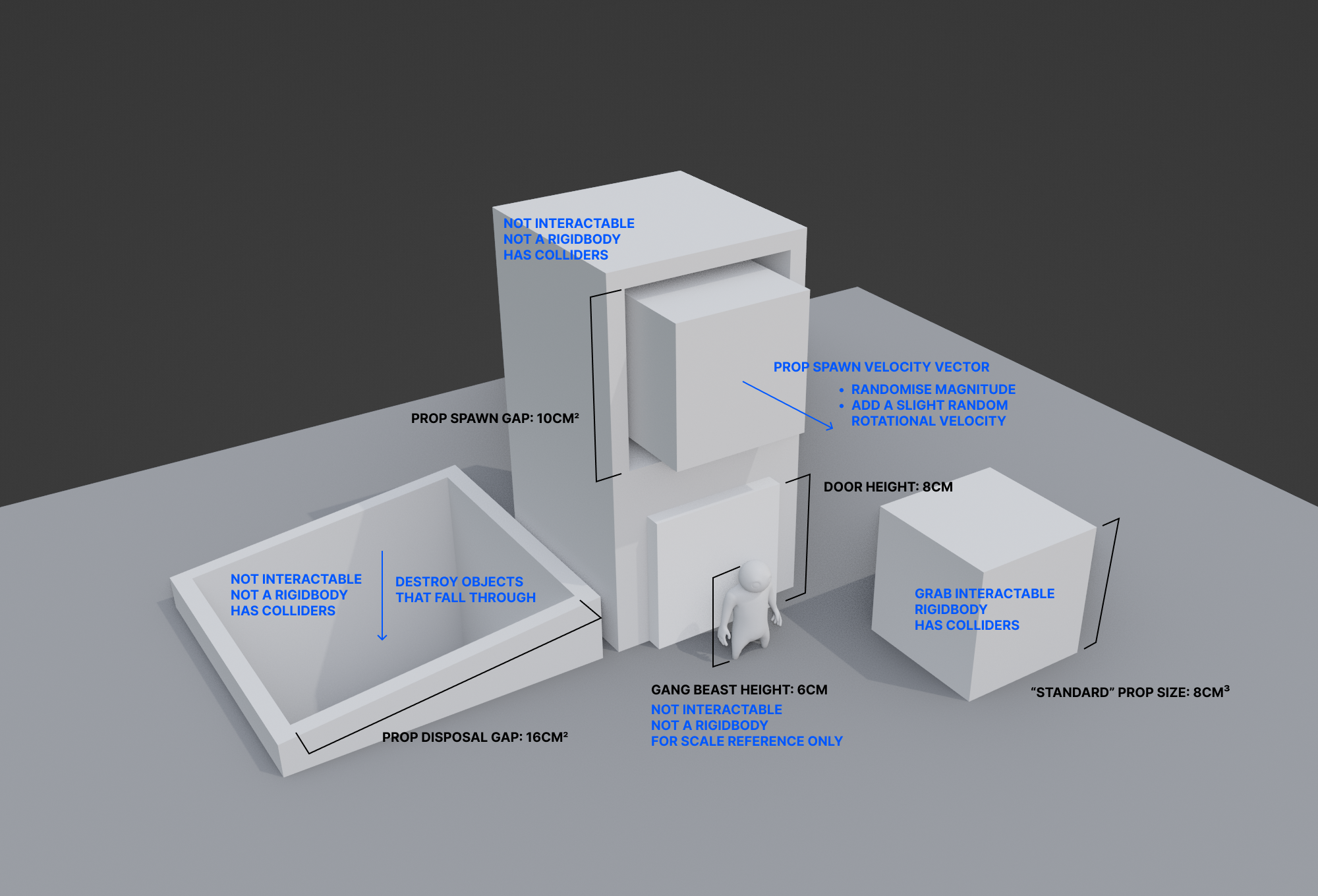
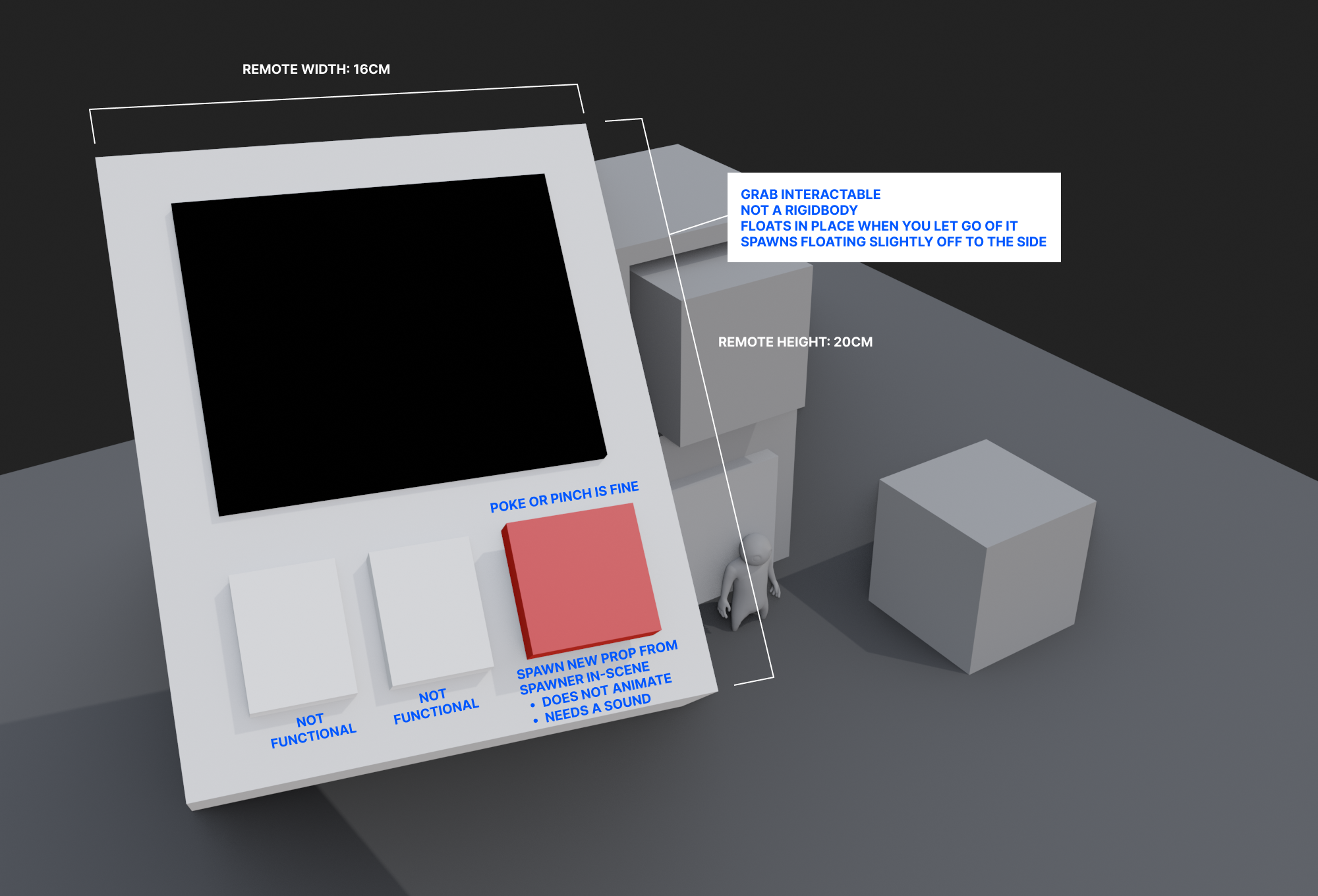
Annotated 3D model (Blender) specifying details for a Unity developer to create a prototype.
Eventually our feedback started to indicate that we weren't yet getting the right feeling with this concept. After some intensive workshopping with the team, we agreed on a new direction; a single unified structure, the “control tower”. This structure could be placed anywhere in the user's space, and once deployed, would unfold and provide all the required features and controls for the experience.
3D animation (Blender) showing a rough early concept of the control tower, and how it might be deployed in the user's space.
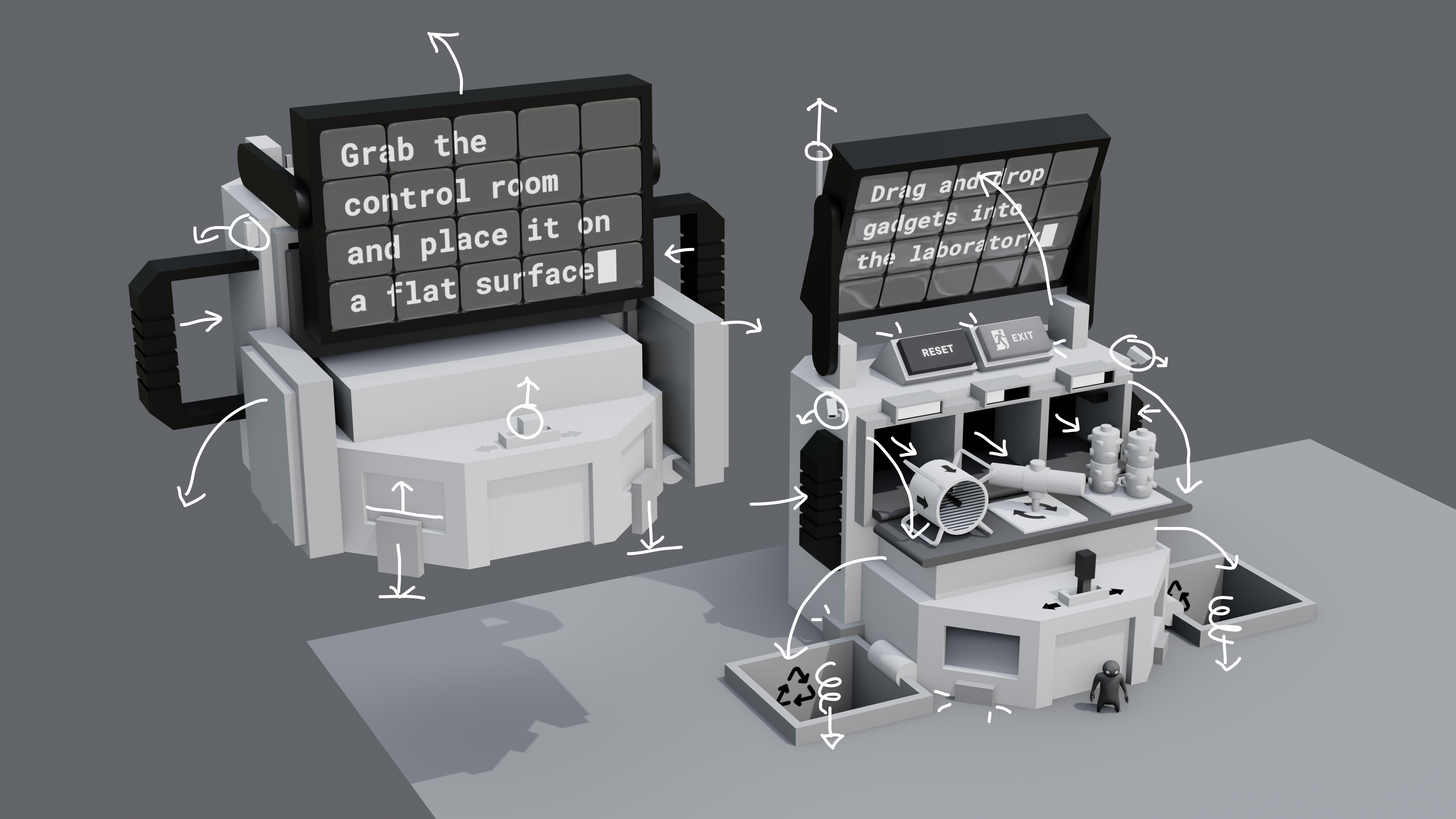
Early annotations for control tower animation.
(First) Meta Quest Unity prototype showing various scale options to be tested by team and client in HMD. (Second) Meta Quest Unity prototype showing the unboxing behaviour of the hazardous prop crates.
Once the overall direction and user experience of our product began to take shape, I moved further into supporting and working alongside our artists / tech artists to ensure the creative vision was preserved.
3D animation (Blender) of the final specification of the control tower unfolding animation. This work was taken by our tech artist and imported into Unity for further polish and code integration.
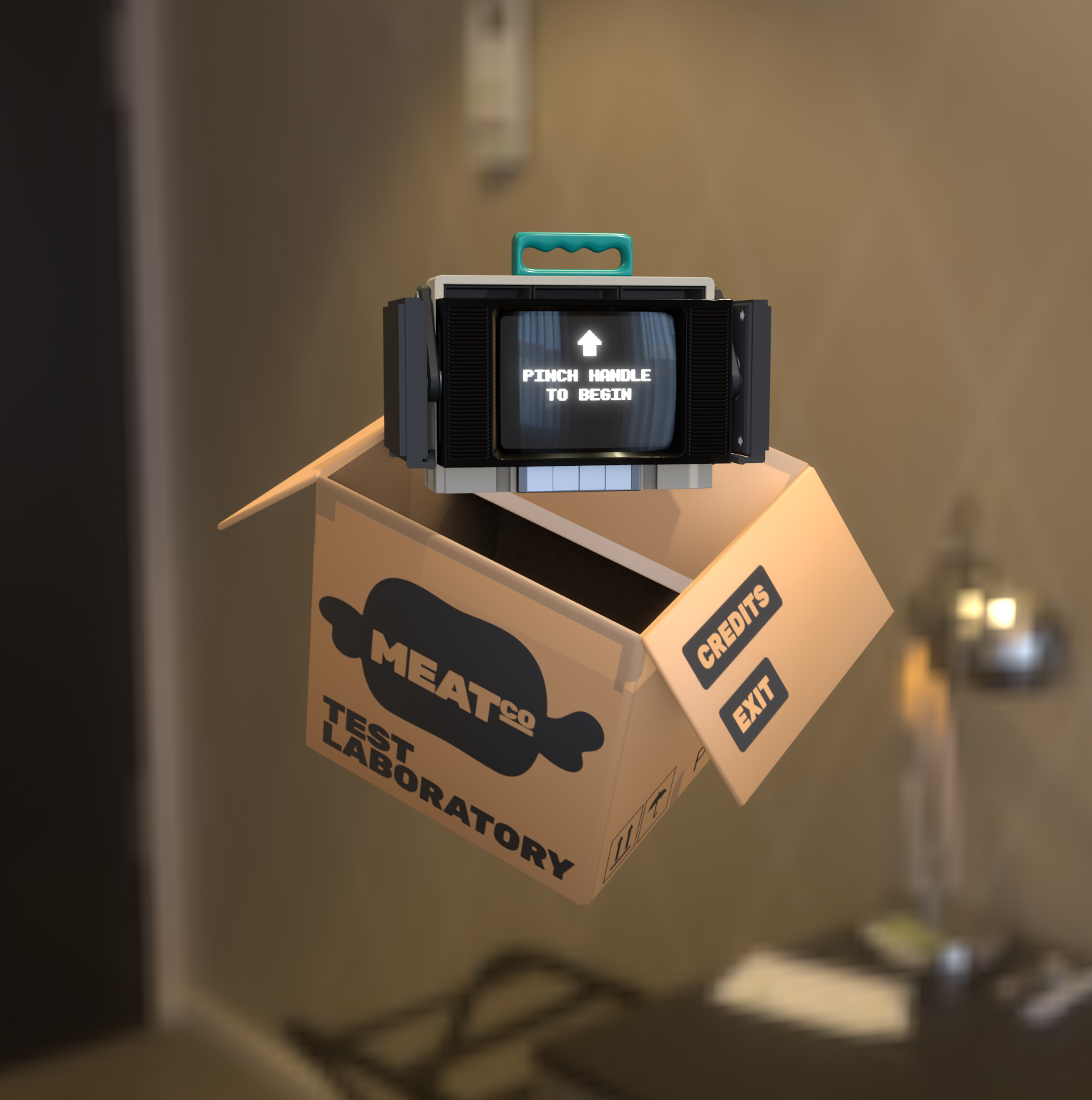
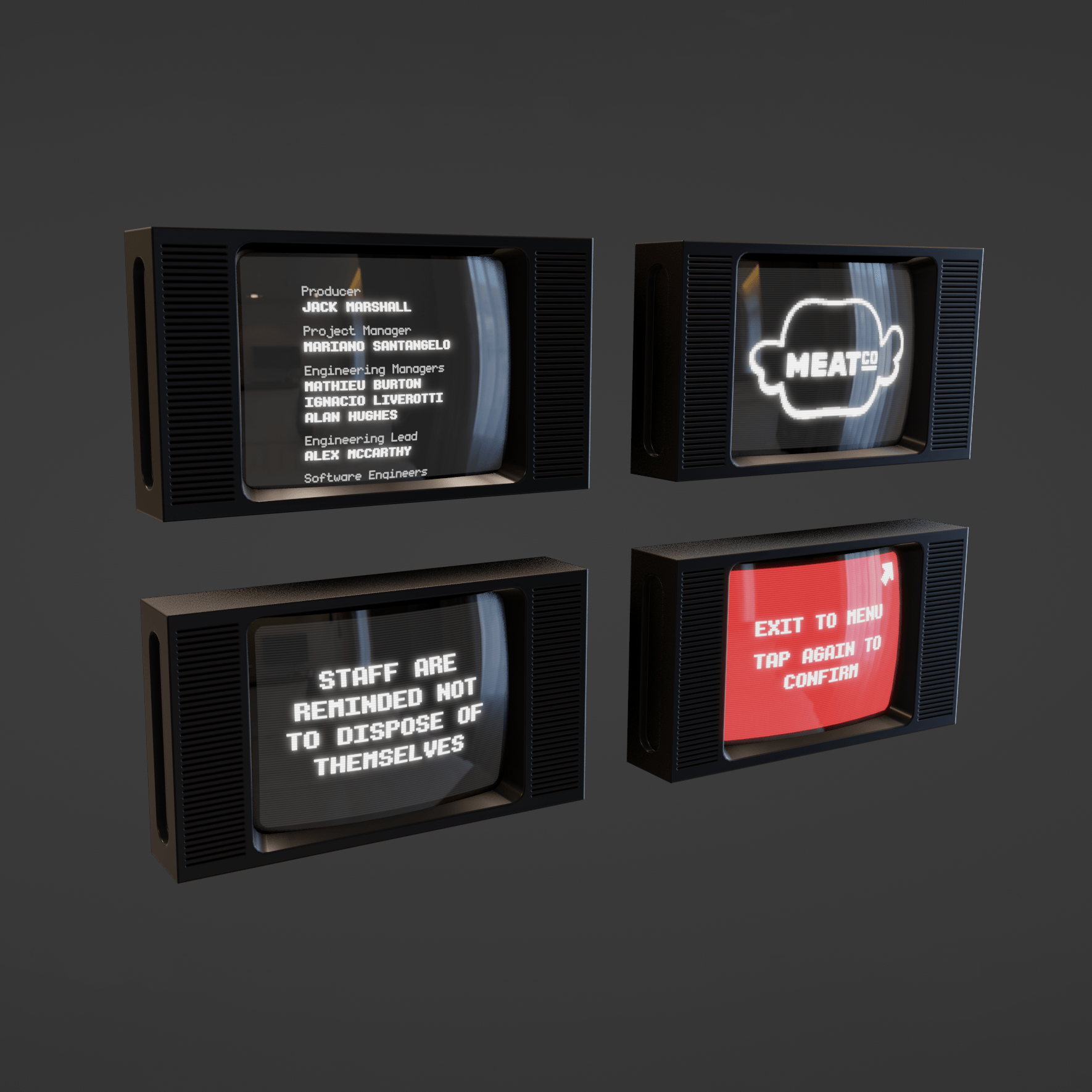
Finalised art assets (Blender) during late production phase.
Near-final build showing the control tower deployment (Apple Vision Pro Simulator).